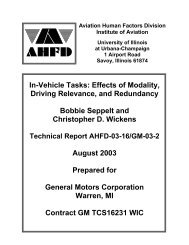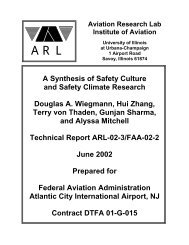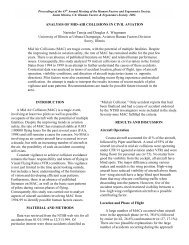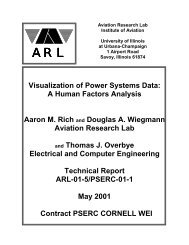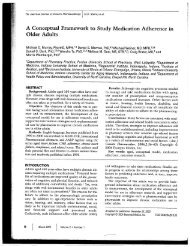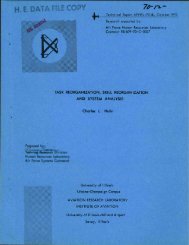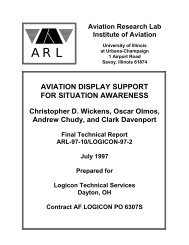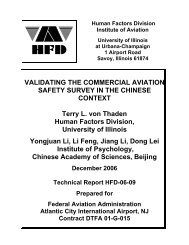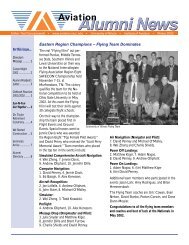Defining and Assessing Safety Culture in High Reliability Systems
Defining and Assessing Safety Culture in High Reliability Systems
Defining and Assessing Safety Culture in High Reliability Systems
You also want an ePaper? Increase the reach of your titles
YUMPU automatically turns print PDFs into web optimized ePapers that Google loves.
Kivimaeki, M., Kuk, G., Elova<strong>in</strong>io, M., Thomson, L., Kalliomaeki-Levanto, T., &<br />
Heikkilae, A. (1997). The team climate <strong>in</strong>ventory (TCI)--four or five factors Test<strong>in</strong>g the<br />
structure of TCI <strong>in</strong> samples of low <strong>and</strong> high complexity jobs. Journal of Occupational &<br />
Organizational Psychology, 70(4), 375-389.<br />
Two versions of the Team Climate Inventory (TCI), consist<strong>in</strong>g of either four or five factors, have<br />
been established <strong>in</strong> <strong>in</strong>novation research. The four-factor version consists of<br />
(1) vision,<br />
(2) participative safety,<br />
(3) task orientation, <strong>and</strong><br />
(4) support for <strong>in</strong>novation,<br />
whereas the five-factor version consists of<br />
(1) vision,<br />
(2) participative safety,<br />
(3) task orientation,<br />
(4) support for <strong>in</strong>novation, <strong>and</strong><br />
(5) <strong>in</strong>teraction frequency.<br />
The psychometric properties of these two alternative versions of TCI were compared <strong>in</strong> this<br />
study. Exploratory factor analysis of the entire sample reproduced both versions with good<br />
<strong>in</strong>ternal consistencies. When a dist<strong>in</strong>ction was made between samples with low <strong>and</strong> high job<br />
complexity accord<strong>in</strong>g to DOT, significant differences between the four- <strong>and</strong> five-factor versions<br />
emerged. Exploratory factor analysis of the sample with low job complexity suggested that both<br />
versions obta<strong>in</strong>ed clear <strong>and</strong> <strong>in</strong>terpretable structures. However, only the five-factor version<br />
obta<strong>in</strong>ed a clear factor structure <strong>in</strong> the sample of high job complexity. Further LISREL<br />
confirmatory factor analyses of both samples suggested that the five-factor structure provided<br />
significantly better fit to the data than the four-factor version. In conclusion, the five-factor<br />
version of the TCI is preferred to the four-factor version because it is more structurally <strong>in</strong>tact <strong>and</strong><br />
less likely to be affected by job complexity.<br />
22




